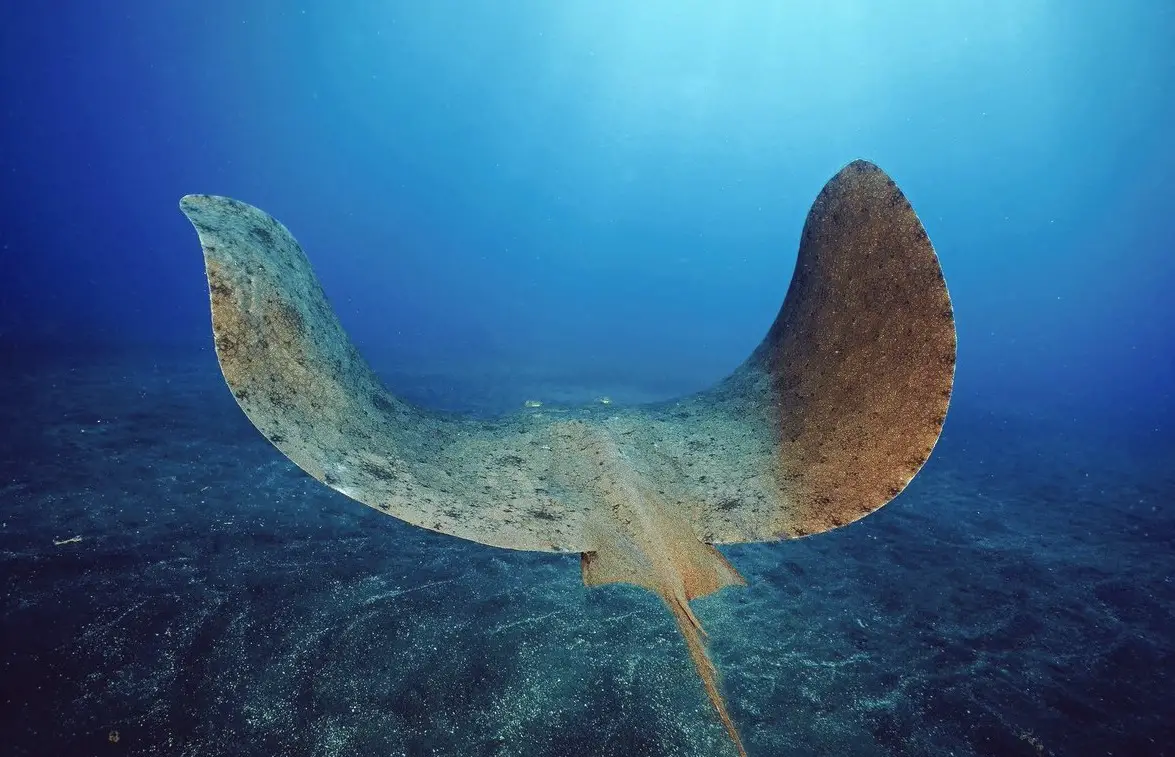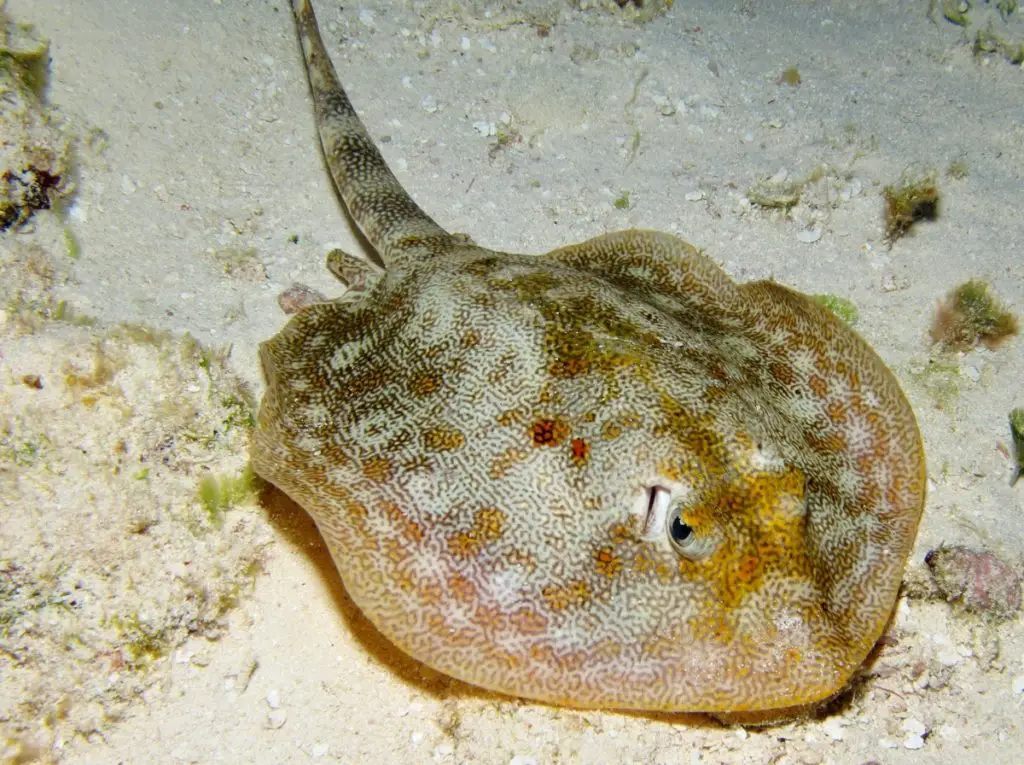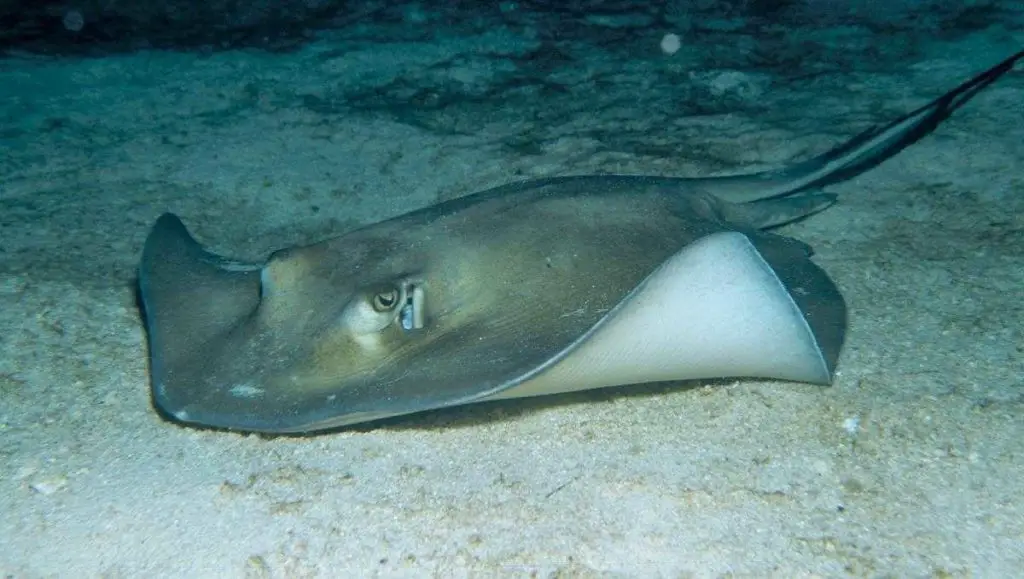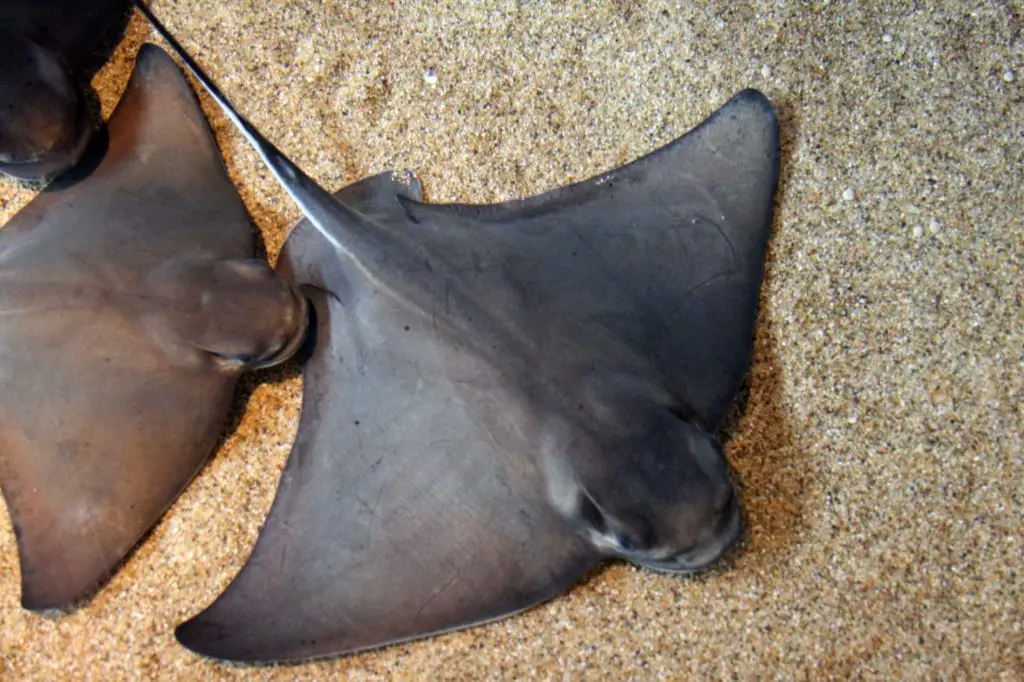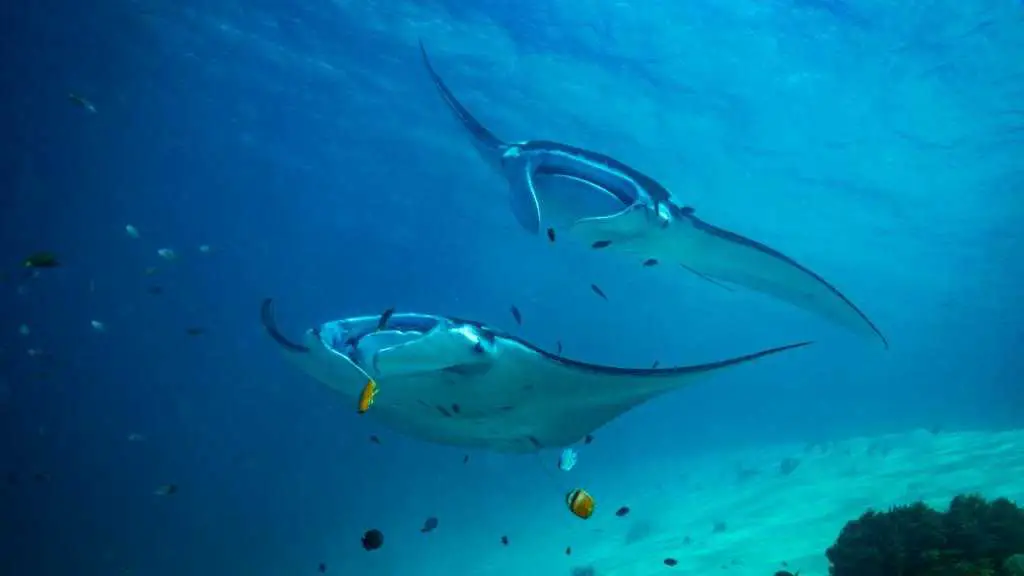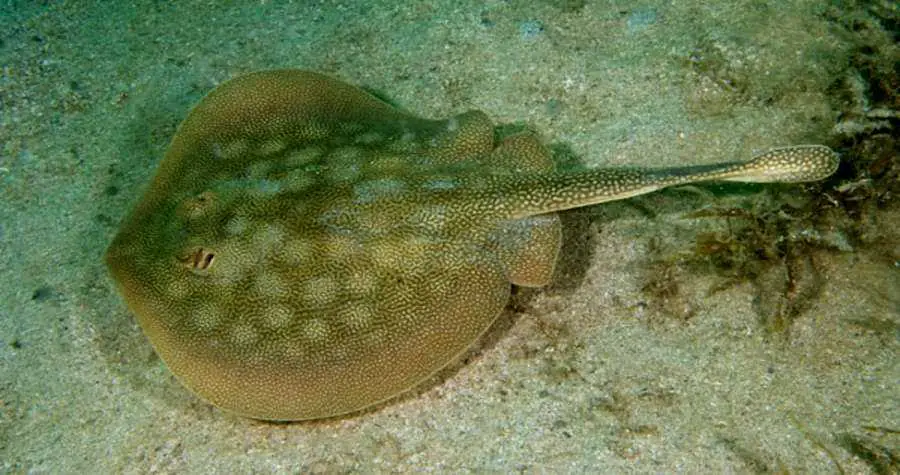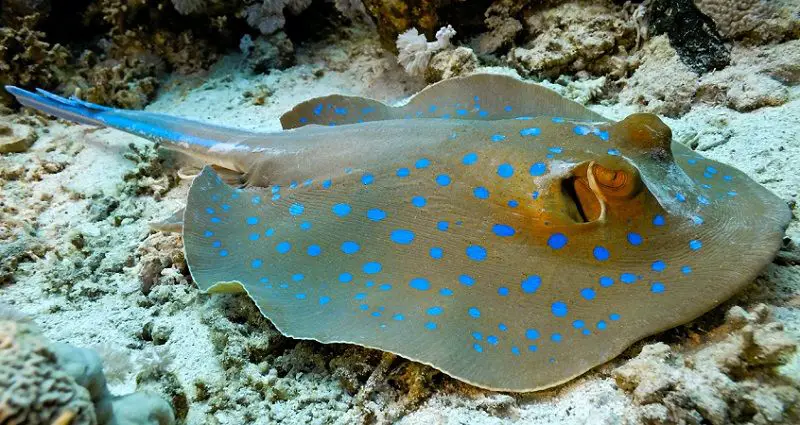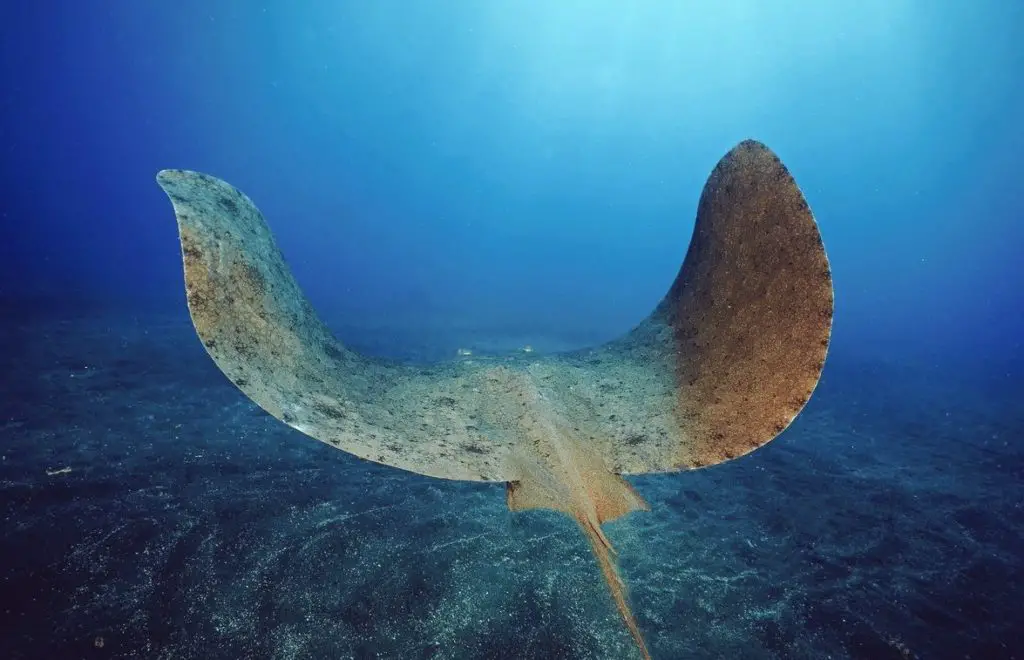There are 11 main types of stingrays. These include the manta ray, round stingray, butterfly ray, and whiptail stingrays. Stingrays are a type of fish that are related to sharks. There are about 9 families of stingray which comprise over 200 different species.
They are solitary animals that only come together when its time to mate. These are the 11 common types of stingrays.
Stingrays are a large suborder of the rays. They are cartilaginous fishes related to sharks. Most stingrays have one or more barbed stings on the tail, which is used only for self-defending.
Most stingrays prefer to dwell at the bottom of the ocean floor where they eat mainly crustaceans and other small creatures like worms.
Contents
Smooth Stingray
These types of stingray are native to Mozambique, Australia, South Africa, and New Zealand. Smooth stingray, also known as a short-tail stingray, grows up to 14 feet in diameter. And, they can weigh up to 770+ pounds!
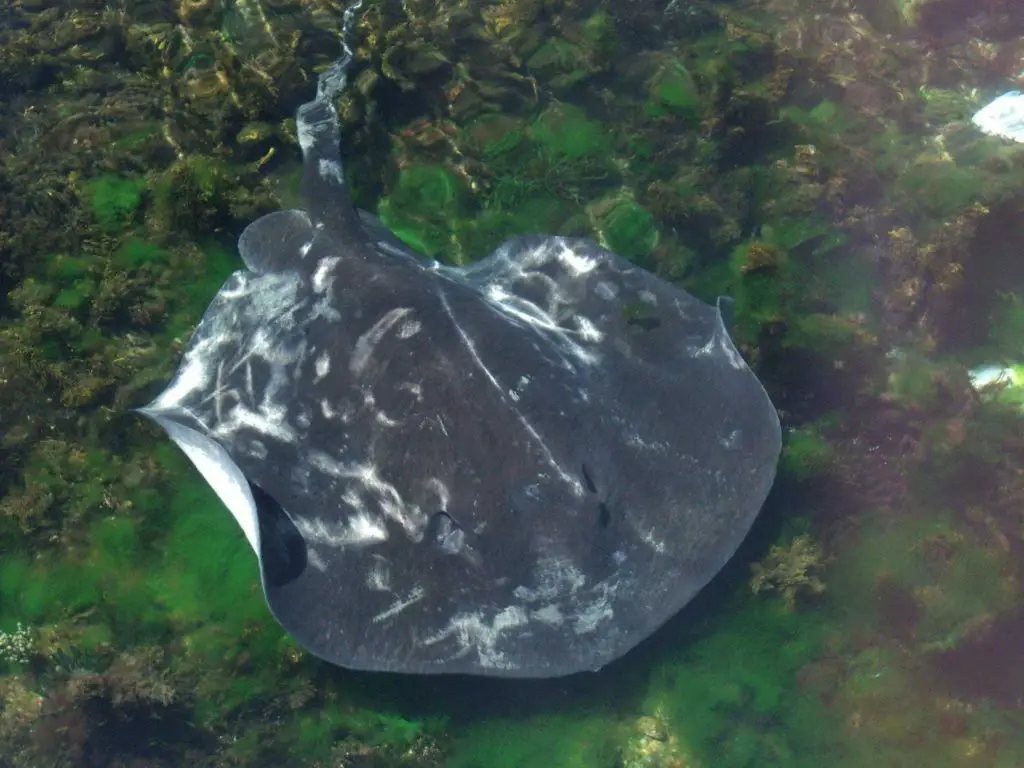
They have two stingers. There’s a small stinger to the front and a much larger stinger in the back. This stingray species thrive in water 600 to 1500 feet deep. During the summer months, large midwater aggregations of short-tail stingrays can be found around the Poor Knights Islands off New Zealand.
Yellow Stingray
Yellow stingrays have short tails. They have no dorsal fins, and the venomous spine is located near the tail fin in the back. They dwell in shallow waters where it is sandy. Despite the name, they can be of a variety of colors and patterns. They are also good at camouflage. Like most rays, the yellow stingray presents little danger to humans. Stingrays only use their venomous tail spine as a form of defense.
Whiptail Stingrays
The river stingrays, and a number of whiptail stingrays (such as the Niger stingray), are restricted to freshwater. These types of rays have tails shaped like whips, with barbed tips, which are poisonous. The southern stingray is a type of whiptail stingray.
The whiptail stingrays are a family, the Dasyatidae, of rays in the order Myliobatiformes. They are found worldwide in tropical to temperate marine waters, and a number of species have also penetrated into freshwater in Africa, Asia, and Australia.
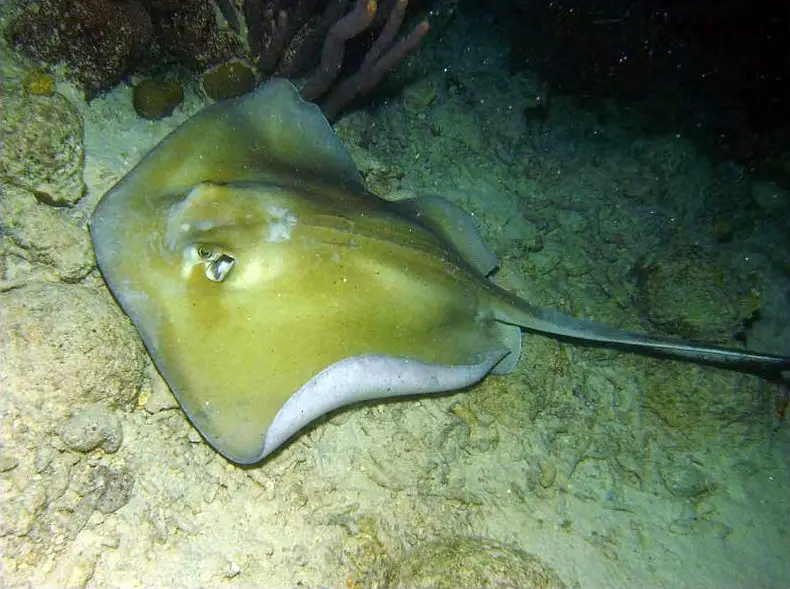
Southern Stingray
The southern stingray types can be identified by their diamond-shaped body. The top side is brown while the underbelly is white in color. These types of stingrays live in the warm waters of the Caribbean Sea and the Gulf of Mexico.
Southern stingrays have been known to grow up to 5 feet in diameter and can weigh up to 160 pounds. These stingrays hide by covering themselves in the sand and sometimes only leaving their eyes and tail visible.
Eagle Ray
These types of stingrays prefer to swim about in the open ocean instead of close to the bottom of the seafloor. They can also be seen leaping out the water at times. Eagle stingrays have one of the longest tails of all the different species of stingrays. And, instead of the typical round body, eagle rays have bodies that make them look like they are flying with wings. This is where they get their name.
Because eagle rays roam about in the open ocean they are vulnerable to accidental capture in commercial fishing operations. Spotted eagle rays, manta rays, and bat rays are all different types of eagle rays.
The eagle rays are a group of cartilaginous fishes in the family Myliobatidae, consisting mostly of large species living in the open ocean rather than on the sea bottom. Eagle rays feed on mollusks and crustaceans, crushing their shells with their flattened teeth. Devil and manta rays filter plankton from the water.
Bat Rays
This type of eagle ray usually hangs around sandy or muddy sloughs, as well as kelp beds, bays, and estuaries. At one point, oyster growers actually caused the destruction of their own oyster beds by trapping bat rays, which eat crabs.
Manta Ray
The largest rays to exist are manta rays and they’re a type of eagle ray too! The average manta ray grows up to 25 feet and can weigh as much as 5100 pounds! These giant fish feed on plankton and fish larvae. It’s typical to see cleaner fish such as wrasse and angelfish swim in their gills and feed off dead tissue on a manta ray.
Despite their large size, these types of rays are non-violent and sometimes swim alongside divers out of sheer curiosity. Caution should still be exhibited when encountering wild animals though. The spiracles (breathing mechanism) typical of rays are vestigial (underdeveloped), and mantas must swim continuously to keep oxygenated water passing over their gills.
Round Stingray
Round stingray or Urobatis Halleri inhabit the waters from California to Panama. These are small rays and mostly bury themselves in sand feeding on small invertebrates.
Round stingrays have a yellowish-brownish color and many beachgoers step on them without noticing. They mostly hang out around sandy beach types. Of course, the little guy stings them but their sting is not fatal although it is quite painful.
Blue Spotted Ray
Blue-spotted rays have colorful blue spots all over their bodies. They feed on small mollusks, shrimps, fish, worms, and crabs, which they find buried in the sand.
Electric Ray
Like the electric eel, electric rays create an electric discharge that’s capable of stunning their foes and pray. These species of ray can generate an electric charge of 8 to 220 volts, depending on species.
Butterfly Ray
Butterfly rays have small shark-like teeth in their mouths. They mostly feed on mollusks and crustaceans. However, they are also know to eat fish as well. Their tails are short and thread-like.
References:
